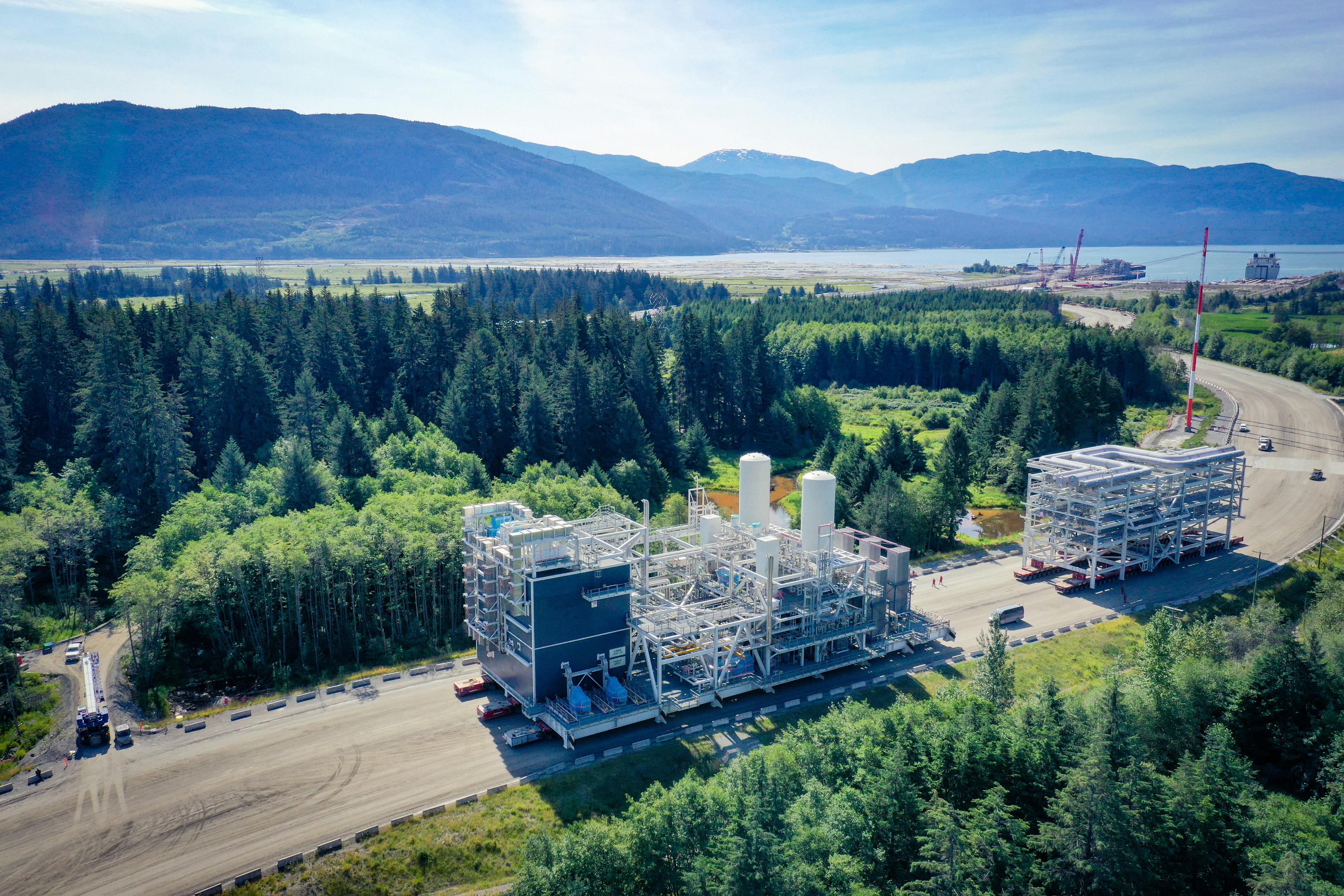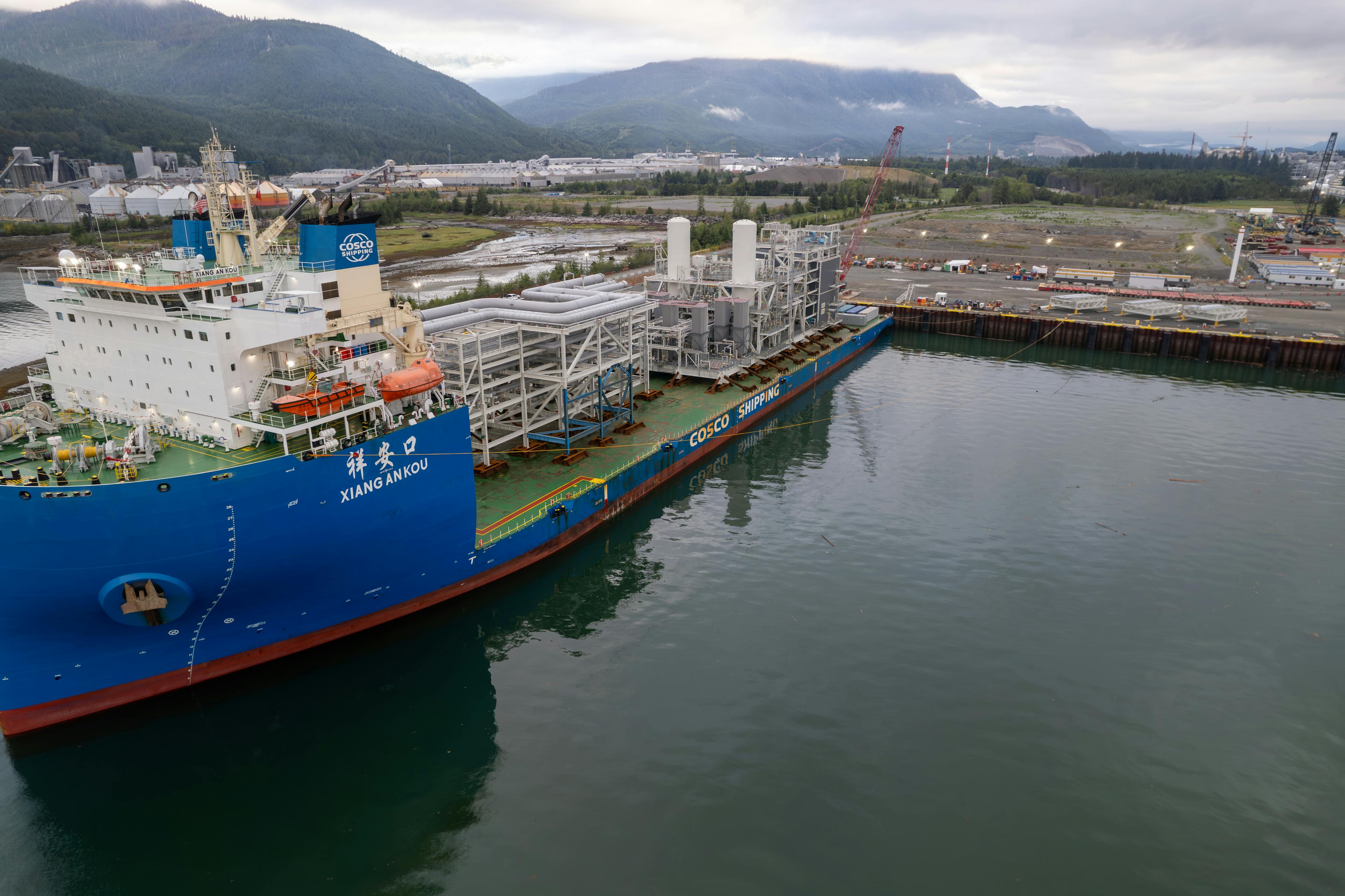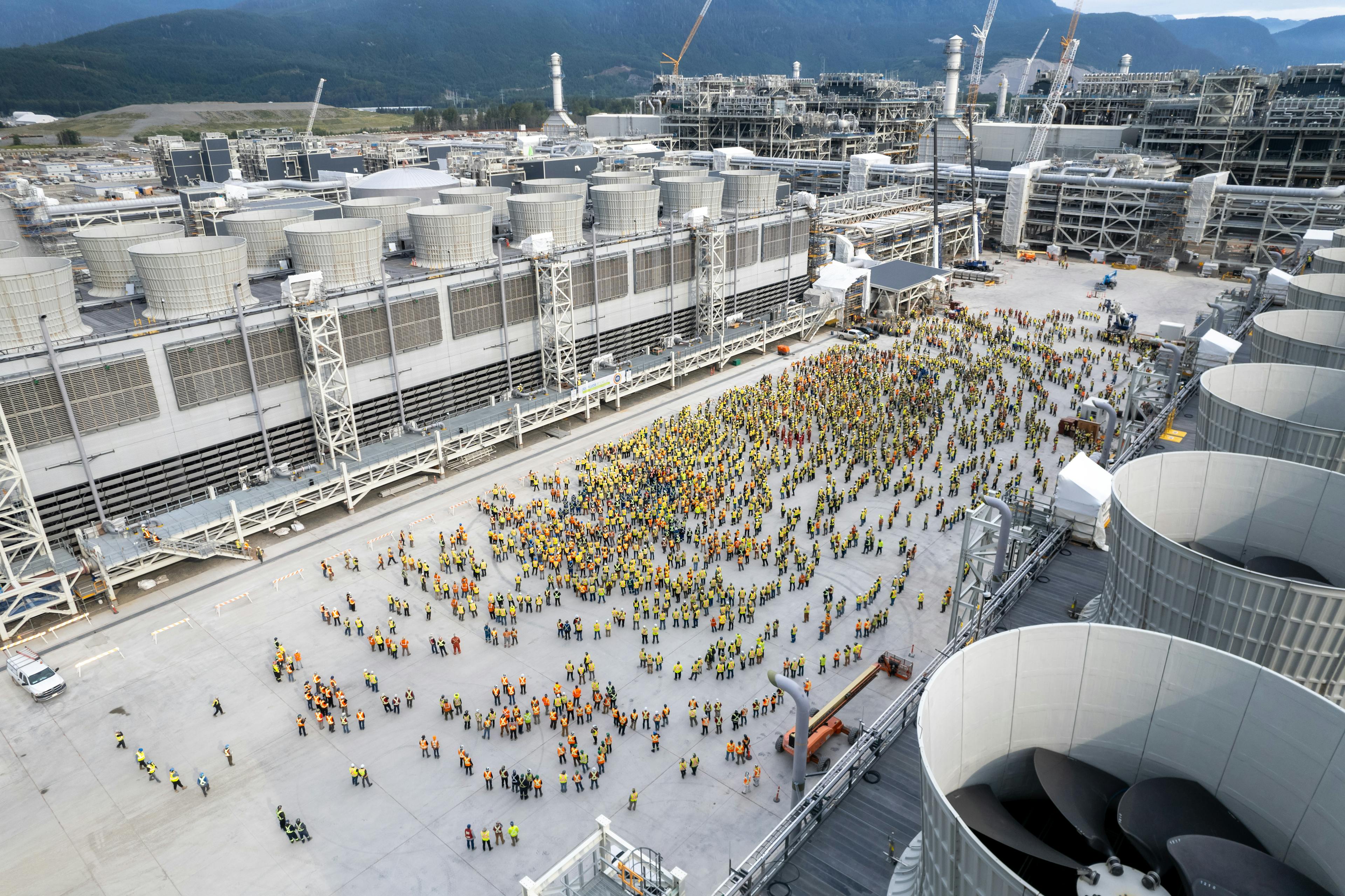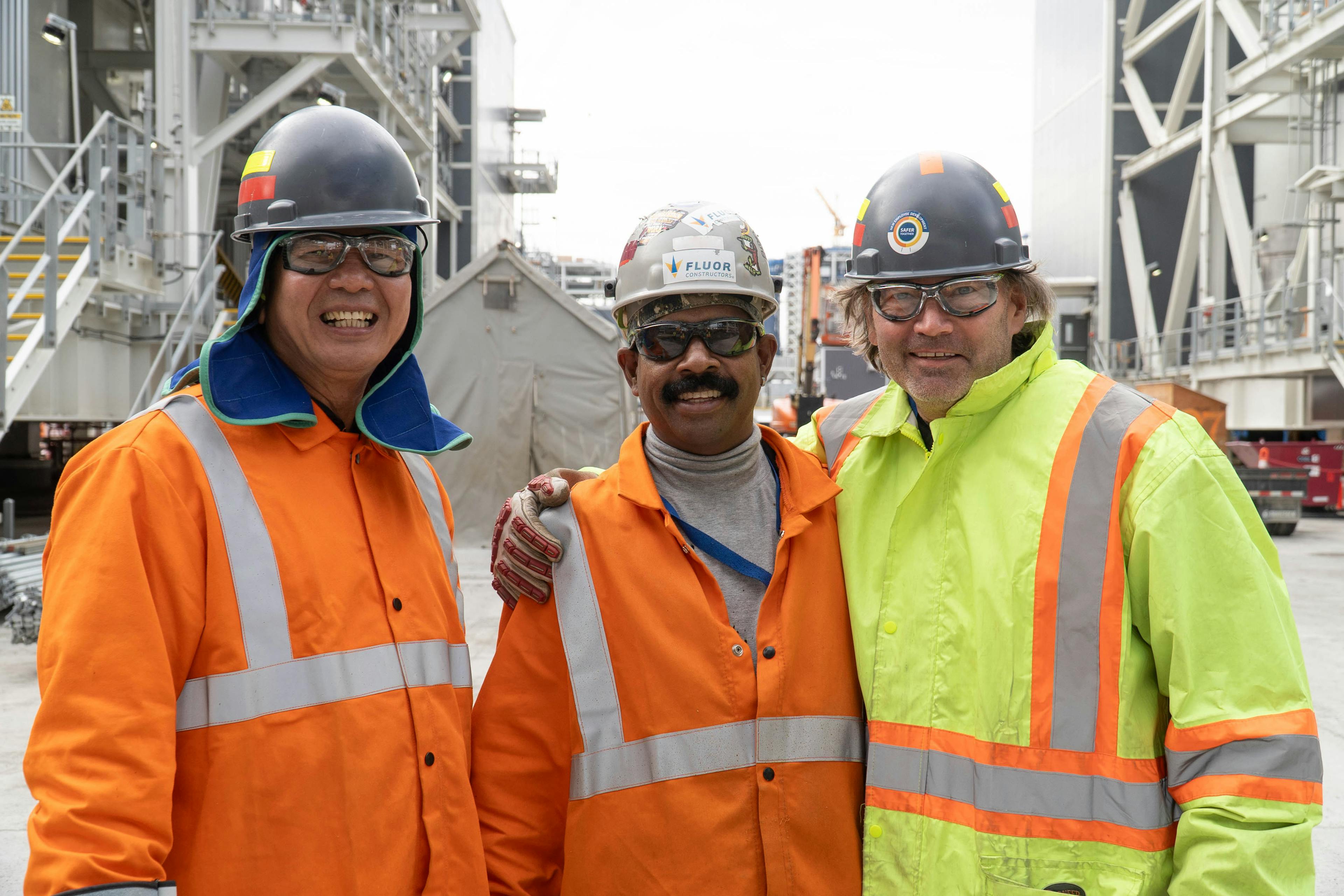
&w=3840&q=75)
LNG Canada Export Facility
Client: LNG Canada
Location: Kitimat, British Columbia, Canada
Business Segment: Energy Solutions
Industry: Energy Transition

Executive Summary
In October 2018, LNG Canada made a final investment decision to build its liquefied natural gas (LNG) export facility in Kitimat, British Columbia, Canada. The project represented the largest energy investment in Canadian history.
The LNG export facility liquefies surplus Canadian natural gas so it can be safely exported to help meet global energy demands. Fluor's joint venture partnership with JGC Corporation delivered multiple aspects of this project, including engineering, procurement, fabrication and delivery of modules, and construction of the project's infrastructure and utilities, marine structures and LNG storage tank.

Client's Challenge
LNG Canada is a joint venture comprising Shell (40%), PETRONAS (25%), PetroChina (15%), Mitsubishi Corporation (15%) and KOGAS (5%).
The plant is the first of its kind in Canada, with an annual production capacity of up to 14 million tonnes.

Fluor's Solution
The design of the facility meets some of the strictest regulatory standards in the world for safety, sustainability and environmental protection. In consultation with First Nations, work activities were planned to minimize potential impacts to the local environment.
The project utilized a cost-effective modular construction approach. Large and complex modules were assembled by several existing fabrication yards and transported to the project site via water, minimizing construction congestion and disruptions in the community.
&w=3840&q=75)
In March 2022, the first major module, measuring 145 feet tall and weighing more than 5,000 tons, was received at the site. The final module arrived in July 2023, completing the module fabrication program. Overall, more than 215 modules of varying sizes were received and set at the project site. The largest modules measured approximately 45 meters wide, 75 meters deep and 47 meters in height. The project also included the construction of the second largest LNG storage tank in the world, standing 56 meters high and 75 meters in diameter with a volume of more than 225,000 cubic meters.
In the summer of 2024, train one of the project moved closer to completion with the final weld. This marked a pivotal moment in the construction of one of the largest energy projects in Canadian history. The final weld took 48 hours of continuous work from teams of welders working in shifts. More than 380 pipe welders had worked on the project since construction began in 2018.

The joint venture focused on hiring locally and throughout British Columbia and Canada. More than 4,500 jobs were created at the peak of construction, which required approximately 7,000 to 7,500 workers due to the shift work nature of employment.
Workforce development and training programs were developed for local community members, with a focus on developing positions for traditionally underrepresented individuals and groups. Contracting and procurement opportunities were also provided for First Nations and local businesses.

Conclusion
We have a long history of delivering successful projects in Canada, dating back to 1945, when we first broke ground on a refinery expansion in British Columbia.
Fluor and JGC began site activities for the LNG Canada project in 2018 and the first product was exported in 2025.
Located on Canada’s west coast, the LNG Canada facility benefits from access to abundant, low-cost natural gas and an ice-free harbor.

In February 2020, JGC Fluor and LNG Canada were jointly recognized by Shell with its Gold Hard Hat HSE award. The award recognized the project’s Design for Safe Construction program, which focused on the elimination and significant reduction of hazards through design, providing an overall reduction to life-critical construction risk.
In 2025, LNG Canada successfully shipped the first liquefied natural gas (LNG) export cargo from the newly-constructed facility.
The facility positions Canada as a major supplier of lower carbon natural gas to global markets and will operate under a 40-year license.
In August 2025, we announced that our joint venture had been awarded the contract to update the front-end engineering and design for a proposed Phase 2 expansion. The goal of the expansion would be to increase the facility’s processing, storage and shipping capabilities.

Project Gallery
&w=3840&q=75)






&w=3840&q=75)

&w=3840&q=75)